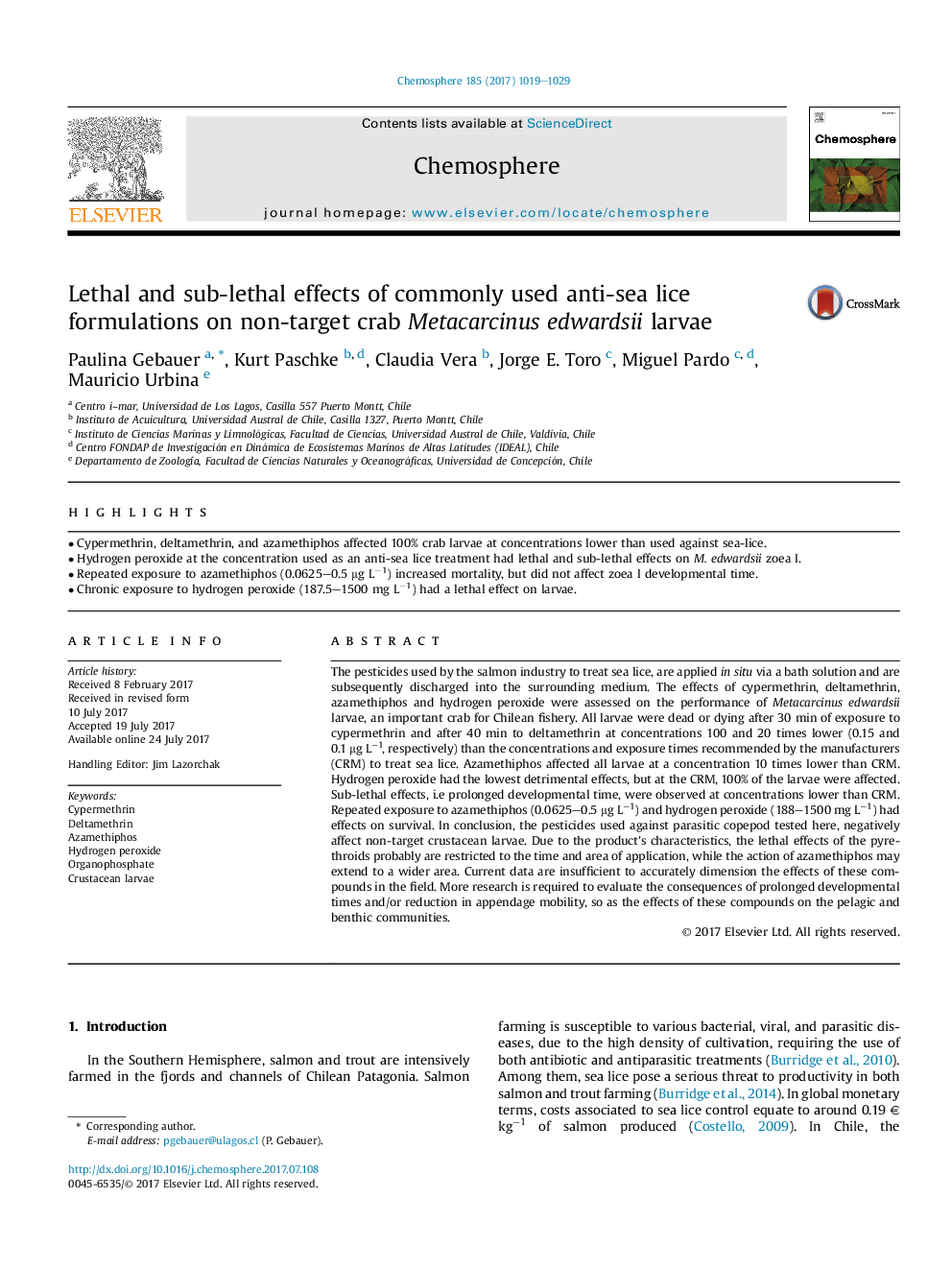| کد مقاله | کد نشریه | سال انتشار | مقاله انگلیسی | نسخه تمام متن |
|---|---|---|---|---|
| 5746766 | 1618786 | 2017 | 11 صفحه PDF | دانلود رایگان |

- Cypermethrin, deltamethrin, and azamethiphos affected 100% crab larvae at concentrations lower than used against sea-lice.
- Hydrogen peroxide at the concentration used as an anti-sea lice treatment had lethal and sub-lethal effects on M. edwardsii zoea I.
- Repeated exposure to azamethiphos (0.0625-0.5 μg Lâ1) increased mortality, but did not affect zoea I developmental time.
- Chronic exposure to hydrogen peroxide (187.5-1500 mg Lâ1) had a lethal effect on larvae.
The pesticides used by the salmon industry to treat sea lice, are applied in situ via a bath solution and are subsequently discharged into the surrounding medium. The effects of cypermethrin, deltamethrin, azamethiphos and hydrogen peroxide were assessed on the performance of Metacarcinus edwardsii larvae, an important crab for Chilean fishery. All larvae were dead or dying after 30 min of exposure to cypermethrin and after 40 min to deltamethrin at concentrations 100 and 20 times lower (0.15 and 0.1 μg Lâ1, respectively) than the concentrations and exposure times recommended by the manufacturers (CRM) to treat sea lice. Azamethiphos affected all larvae at a concentration 10 times lower than CRM. Hydrogen peroxide had the lowest detrimental effects, but at the CRM, 100% of the larvae were affected. Sub-lethal effects, i.e prolonged developmental time, were observed at concentrations lower than CRM. Repeated exposure to azamethiphos (0.0625-0.5 μg Lâ1) and hydrogen peroxide (188-1500 mg Lâ1) had effects on survival. In conclusion, the pesticides used against parasitic copepod tested here, negatively affect non-target crustacean larvae. Due to the product's characteristics, the lethal effects of the pyrethroids probably are restricted to the time and area of application, while the action of azamethiphos may extend to a wider area. Current data are insufficient to accurately dimension the effects of these compounds in the field. More research is required to evaluate the consequences of prolonged developmental times and/or reduction in appendage mobility, so as the effects of these compounds on the pelagic and benthic communities.
Journal: Chemosphere - Volume 185, October 2017, Pages 1019-1029